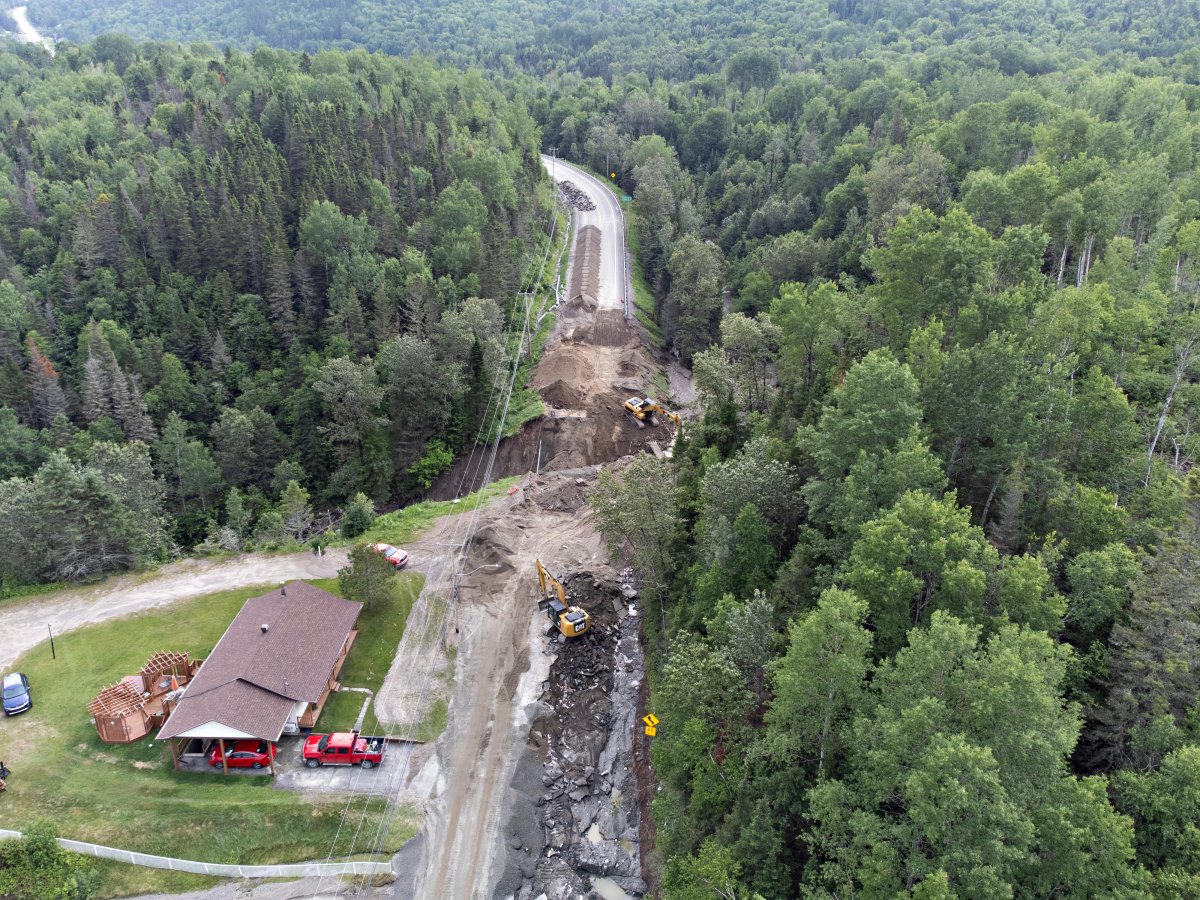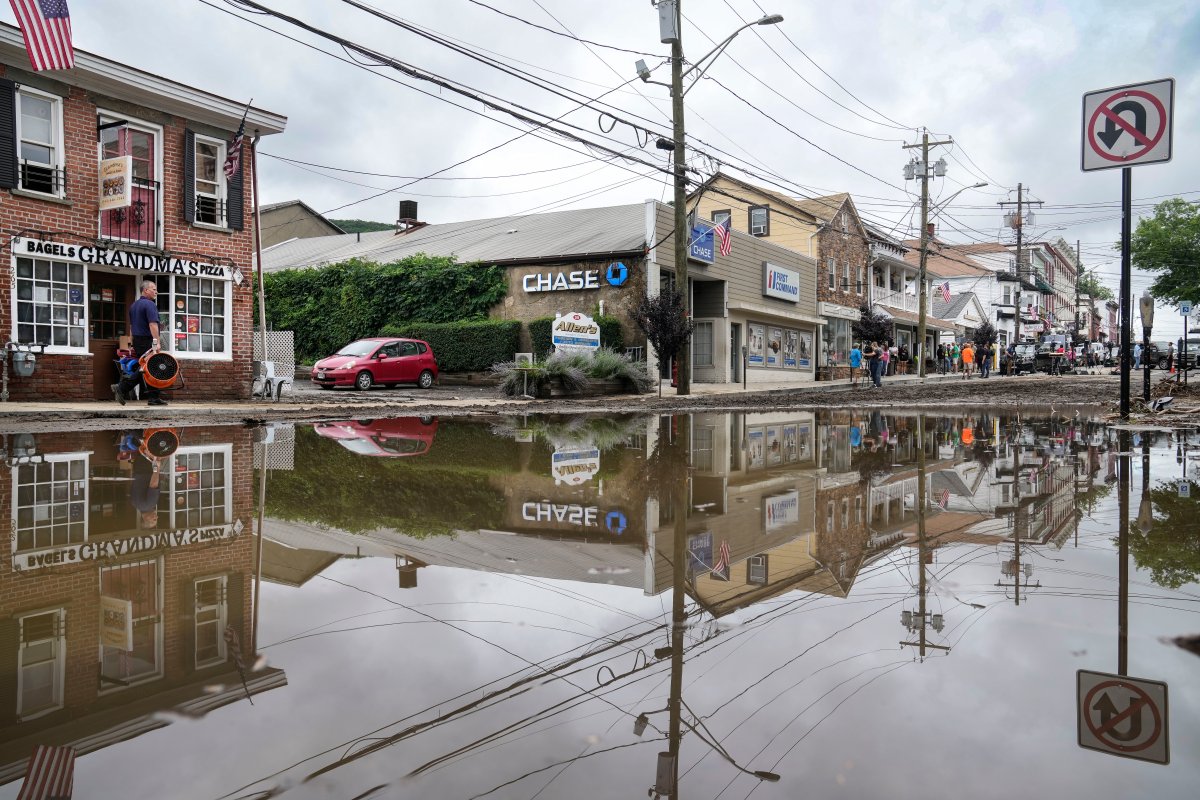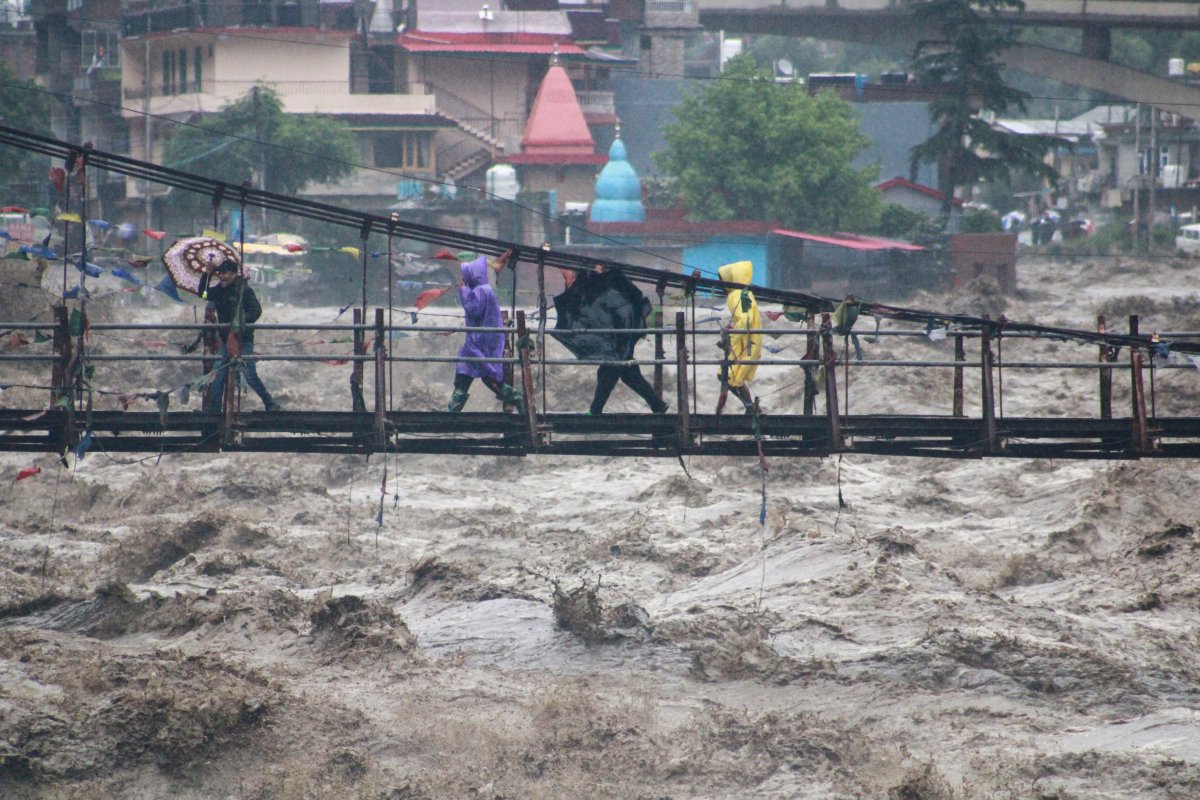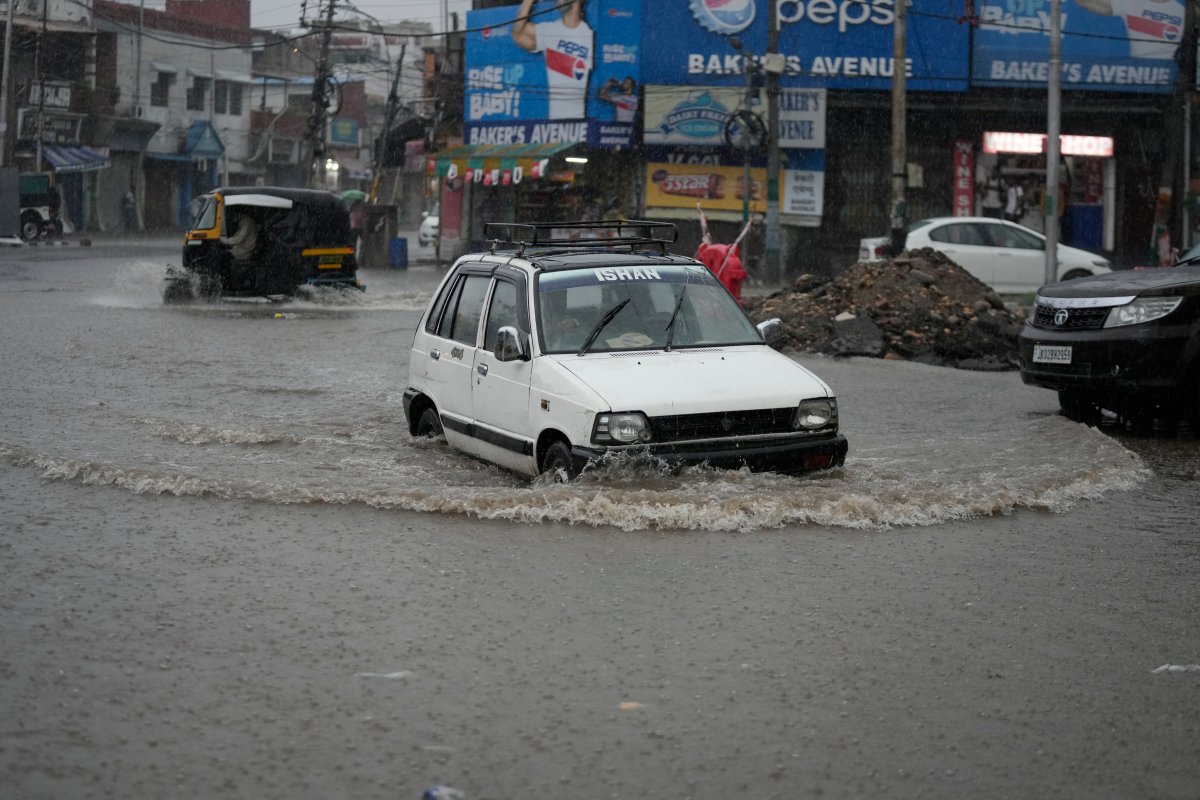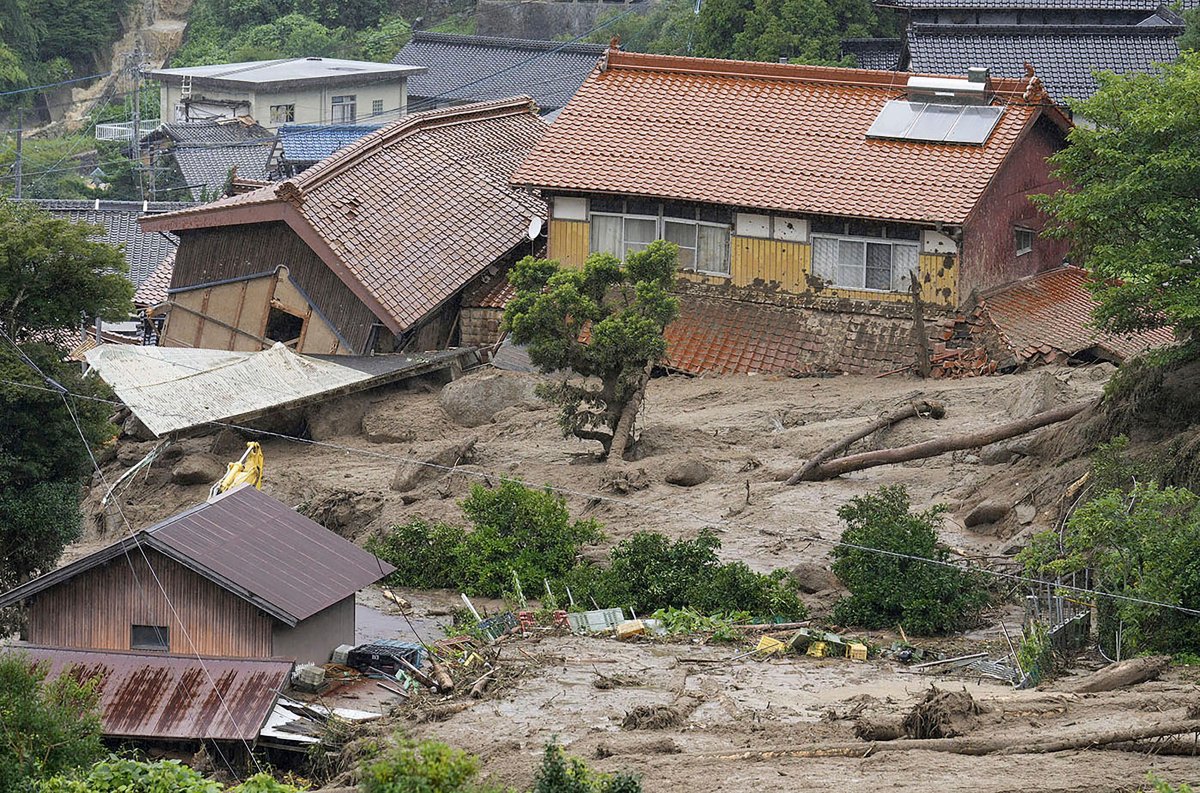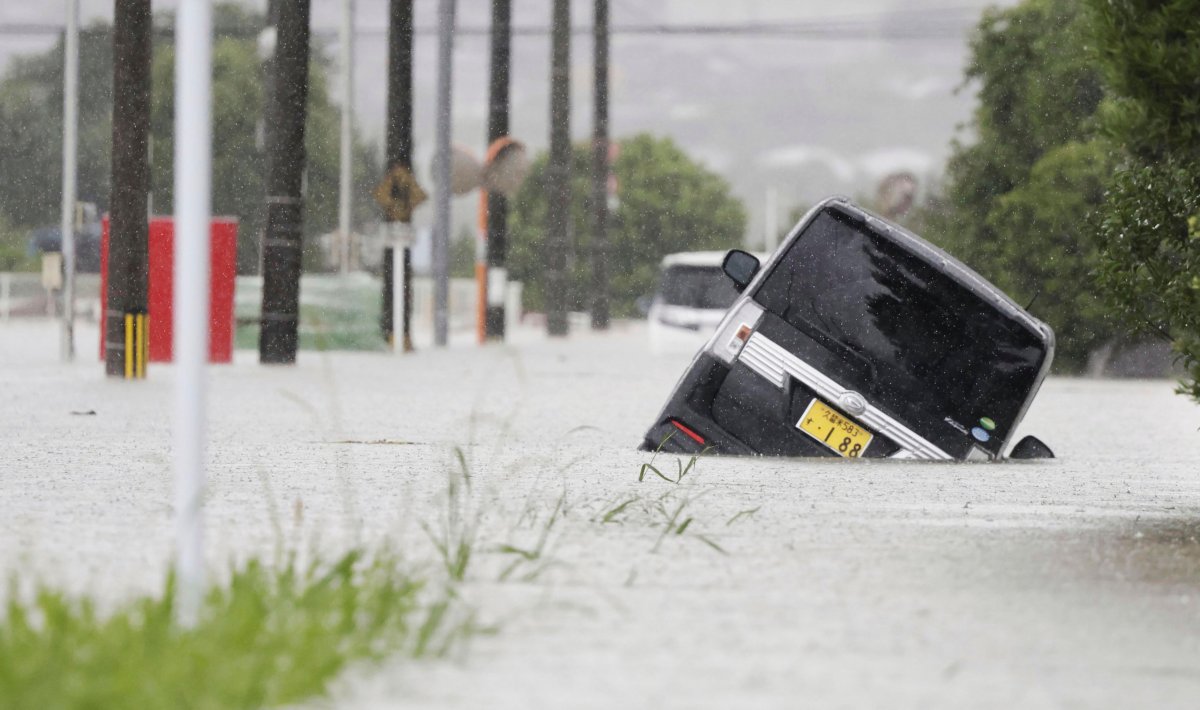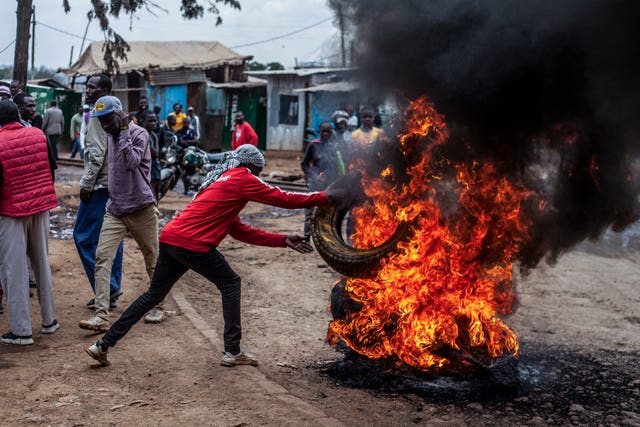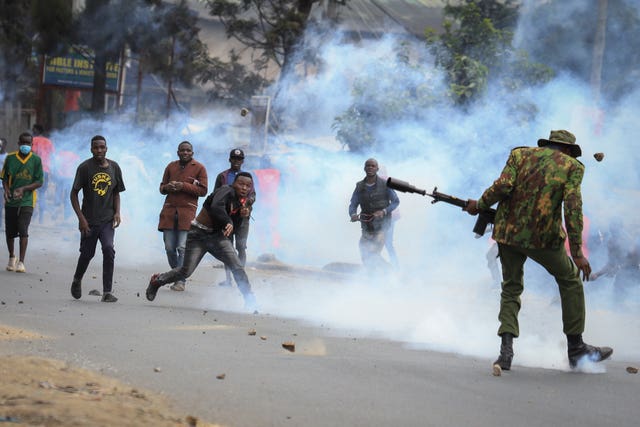By Karen Graham
Published July 11, 2023

Landslide during the floods in Patan block, Satara, Maharashtra, India in 2021
Destructive flooding is happening around the globe, and these events have one thing in common: Storms forming in a warmer atmosphere.
Although terrible flooding in India, Japan, China, Turkiye, and the United States may seem to be distant and isolated events – they are not isolated, say atmospheric scientists, according to CTV News Canada.
Simply put, a warmer atmosphere means more extreme rainfall has become a reality. And additional warming is leading scientists to predict that it will only get worse.
Pollutants, especially carbon dioxide, and methane, are heating the atmosphere. Instead of allowing heat to radiate away from Earth into space, they hold onto it. Storms are forming in an atmosphere that is becoming warmer and wetter.
“Sixty-eight degrees Fahrenheit can hold twice as much water as 50 degrees Fahrenheit,” said Rodney Wynn, a meteorologist at the National Weather Service in Tampa Bay. “Warm air expands, and cool air contracts. You can think of it as a balloon – when it’s heated, the volume is going to get larger, so therefore it can hold more moisture.”
According to NASA, for every 1 degree Celsius, which equals 1.8 degrees Fahrenheit, the atmosphere warms, holding about seven percent more moisture. The average global temperature has increased by at least 1.1 degrees Celsius (1.9 degrees Fahrenheit) since 1880.
“When a thunderstorm develops, water vapor gets condensed into rain droplets and falls back down to the surface. So as these storms form in warmer environments that have more moisture in them, the rainfall increases,” explained Brian Soden, professor of atmospheric sciences at the University of Miami.

Soden cites Turkiye’s mountainous and scenic Black Sea coast, where heavy rains swelled rivers and damaged cities with flooding and landslides. At least 15 people were killed by flooding in another mountainous region in southwestern China.
“As the climate gets warmer we expect intense rain events to become more common, it’s a very robust prediction of climate models,” Soden added. “It’s not surprising to see these events happening, it’s what models have been predicting ever since day one.”
Gavin Schmidt, climatologist, and director of the NASA Goddard Institute for Space Studies, also points out that the regions being hit the hardest by climate change are not the ones that emit the largest amount of planet-warming pollutants.
“The bulk of the emissions have come from the industrial Western nations and the bulk of the impacts are happening in places that don’t have good infrastructure, that are less prepared for weather extremes and have no real ways to manage this,” said Schmidt.

Japan experiences the ‘heaviest rain ever’
Six people died and three others were missing after the “heaviest rain ever” triggered floods and landslides in southwest Japan. Residents in Kyushu, one of the country’s four main islands, were warned to stay alert for landslides.
The chief cabinet secretary, Hirokazu Matsuno, said up to six people were thought to have died as a result of heavy rain that caused rivers to burst their banks and disrupted to bullet train services, as well as cutting off roads and water supplies.
“This is the heaviest rain ever experienced” in the region, said Satoshi Sugimoto, a meteorological agency official, reports The Guardian. “The situation is such that lives are in danger and their safety must be secured.”

India hit with flooding and landslides
At least 49 people have died since the weekend amid unusually heavy downpours that have pummeled the northern part of the country and caused widespread damage.
The hardest hit was the Himalayan state of Himachal Pradesh, which received more than 10 times its average rainfall for this time of year. The death toll there stood at 30 as of Monday evening, according to the local police.
Extreme weather patterns, including record heat waves and heavy floods in the monsoon season, have become more frequent, putting extra hardship on farmers who complain of the devastating effect on crops as the rains have become more unpredictable and damaging.
R.K. Jenamani, who works for the India Meteorological Department in New Delhi, said, “The rainfall is several times more than normal. For example, in Himachal Pradesh, the normal rainfall would have been around eight millimeters (less than half an inch), but it was 103.4 millimeters (about four inches) on Sunday.”
Some of the heaviest rainfall in decades also struck the Delhi region, according to the India Meteorological Department. The rains flooded homes and streets, killing at least three people, Delhi fire department officials said.
People around the world are dying in ‘unprecedented’ heavy rains this week
States, India and Japan, and have also forced hundreds to evacuate in Quebec.
Here’s a look at how people around the world have been grappling with the latest bout of extreme wet weather.
On July 10, officials said that 220 homes were evacuated in Ste-Brigitte-de-Laval, Que., near Quebec City after more than 70 millimetres of rain fell just north of the town, which caused water levels to rise.
And the threat isn’t over yet as Environment Canada predicts another 80-120 millimetres of rain in the area by the end of Tuesday.
Officials said several areas in southern and central Quebec were being monitored for flood risks and also for potential landslides.
“The precipitation that falls on waterways, we see the water level rise in real time, but landslides are more insidious, sometimes enough water falls to impact the ground so that it becomes susceptible to a landslide that finally takes place a few days after,” said Joshua Menard-Suarez, a Public Safety Department spokesman.
Heavy rains also lashed several parts of the northeastern United States over recent days.
In Hudson Valley, N.Y., a woman died while trying to escape her flooded house on Sunday.
The slow-moving storm reached New England after hitting parts of New York.
U.S. President Joe Biden, who is in Vilnius, Lithuania, attending the annual NATO summit, declared a federal emergency in Vermont and authorized the Federal Emergency Management Agency to help co-ordinate disaster relief efforts and provide assistance.
“Serious, life-threatening flooding is occurring today across much of Vermont. Emergency crews have conducted rescues in multiple communities. About two dozen state roads are closed as of 10AM. Flash flood warnings are in effect from the Massachusetts line to the Canadian border,” Vermont police tweeted on Monday.
Rescue teams reached Vermont as relentless heavy downpour battered the entire region overnight.
Flood warnings continued into Tuesday and the downtown area in Vermont’s capital city Montpelier was inundated.
New York Gov. Kathy Hochul has declared a state of emergency for Orange County.
“We have not seen rainfall like this since Irene,” Vermont Gov. Phil Scott said on Monday, referring to Tropical Storm Irene in August 2011. That storm killed six in the state, washed homes off their foundations and damaged or destroyed more than 200 bridges and 500 miles (805 kilometres) of highway.
However, Irene lasted just about 24 hours, Scott said.
“This is going on. We’re getting just as much rain, if not more. It’s going on for days. That’s my concern. It’s not just the initial damage, it’s the wave, the second wave, and the third wave,” he said.
Shelters were set up at churches and town halls. The National Weather Service in Burlington said rain in the northern part of Vermont was expected to lessen Tuesday, but more rain was in the forecast for Thursday.
Severe flooding has also hit on the other side of the world.
At least 15 people died in landslides and flashfloods in northern India, caused by torrential rainfall. The country’s northern hill states, which lie in the Himalayan ranges, were worst affected. But the nation’s capital, New Delhi, did not escape the extreme weather.
One person died in New Delhi and schools were ordered shut by the city government.
The levels in the Yamuna River, which runs across the metropolis, rose dangerously on Tuesday as India’s weather agency has warned of more rainfall in the coming days.
In the 24 hours between July 8 and July 9, New Delhi saw 153 millimetres of rain.
The city’s chief minister, Arvind Kejriwal, said this was the most rainfall the city had seen since 1982.
“Delhi’s system is not equipped to handle this level of rainfall, so naturally people had to face a lot of hardship,” he said at a press conference on Monday.
Landslides triggered by the rains disrupted traffic on key highways in Uttarakhand, a tourist hill state in the Himalayas, prompting warnings for residents not to venture out of their homes unless necessary. Authorities used helicopters to rescue people while bridges and houses were swept away in neighbouring Himachal Pradesh.
Scientists say monsoons are becoming more erratic due to climate change and global warming, leading to frequent landslides and flash floods in India’s Himalayan north.
Neighbouring Pakistan, where 80 people died from flooding last month and which was hit by massive and devastating floods last summer, is gearing up for a return of the flooding.
Evacuations were underway from the lowlands in eastern Punjab province, according to Pakistan’s disaster management agency.
More than 500 people were moved from the villages of Narowal, Sialkot and elsewhere, officials said. Pakistan’s Prime Minister Shehbaz Sharif on Monday praised rescuers for evacuating those stranded in Punjab.
In Japan, rainfall and mudslides left at least two people dead and six missing this week.
Rain falling in the regions of Kyushu and Chugoku since the weekend caused flooding along many rivers, triggered mudslides, closed roads, disrupted trains and cut the water supply in some areas.
The Japan Meteorological Agency issued an emergency heavy rain warning for Fukuoka and Oita prefectures on the southern main island of Kyushu, urging residents in riverside and hillside areas to take maximum caution.
More than 1.7 million residents in vulnerable areas were urged to take shelter.
The emergency warning was downgraded later Monday to a regular warning.
Prime Minister Fumio Kishida, who is scheduled to attend a July 11-12 NATO summit in Lithuania, said he will make a final decision on whether to go after assessing the extent of damage Tuesday morning.
“Either way, we will do our utmost to respond to the disaster by putting people’s lives first,” he said.
In Kurume, also in Fukuoka, a mudslide hit seven houses, burying 21 people.
Six were able to escape on their own. Rescue workers extracted nine people alive and were working to remove five others, but one remained missing, according to the disaster agency.
Toyota Motor Corp. suspended night-time production at three Fukuoka factories on Monday as a safety precaution. Normal production was expected to resume on Tuesday.
In the city of Karatsu in Saga prefecture, rescue workers were searching for three people whose houses were hit by a mudslide, the agency said. Video on NHK public television showed one of the destroyed houses reduced to just a roof sitting on the muddy ground amid flowing floodwaters.
At least three other people were missing elsewhere in the region.
Turkey and China also faced serious floods last week, with recovery work still underway. At least 15 people were killed by flooding in southwestern China, with tens of thousands evacuated.
Seasonal flooding hits large parts of China every year, particularly in the semi-tropical south.
However, some northern regions this year have reported the worst floods in 50 years.
— with files from The Canadian Press and The Associated Press


